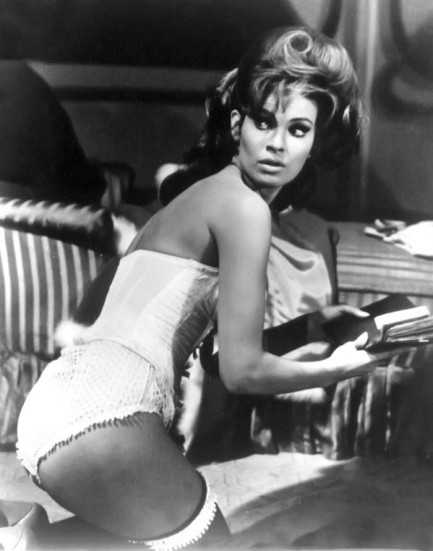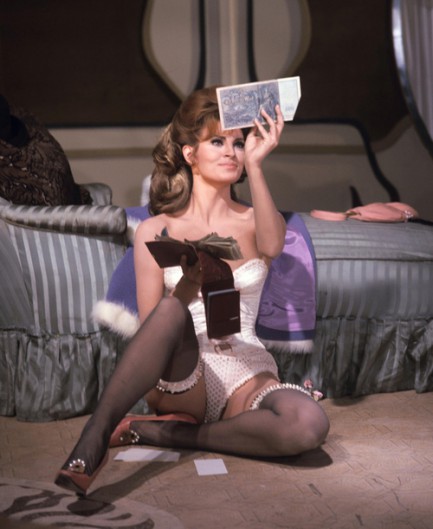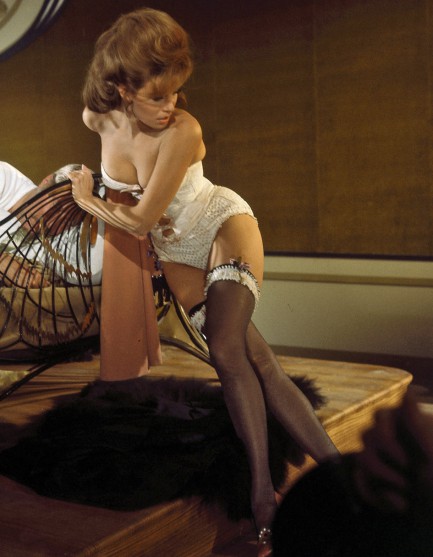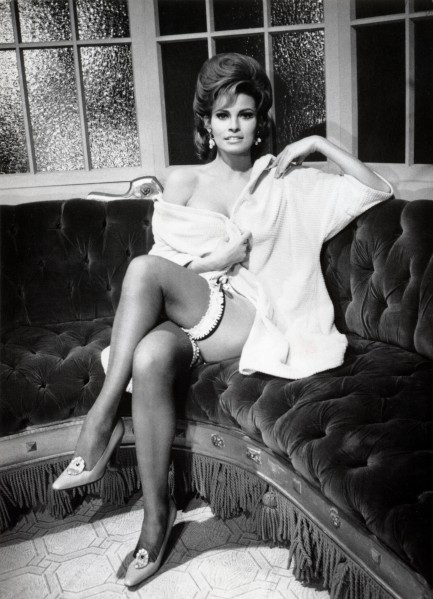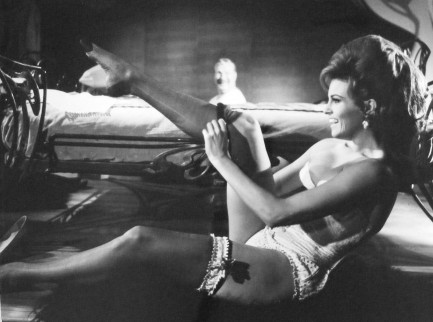 I'm off to see my hair stylist, then I'm headed to the pet groomer. Conveniently, they're the same person. 
Bet you didn't notice the dog at first, but there he is, such a happy boy, clutched to the bosom of French actress France Anglade. The beautiful mademoiselle Anglade was born in 1942 in Constantine, France, and if you can't quite place that town, that's because today it's in Algeria. See, the French thought of Algeria as just a southerly department of France, which must have made the locals who'd had their land taken over feel a little better about it. Anglade briefly took over French cinema, appearing in an amazing seventeen films from 1962 to 1964. She continued acting until 1994, and when all was said and done had starred in efforts such as Le plus vieux métier du monde, aka The Oldest Profession, 24 Hours To Kill, and Les bricoleurs, aka Who Stole the Body? This amazing photo first appeared in Cinémonde magazine in 1967.
 For British movie lovers Continental Film Review was their ticket across the English Channel. 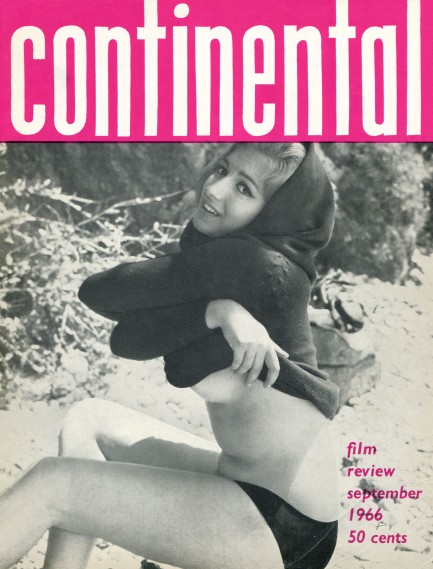
Continental Film Review was first published—as far as we can discern—in November 1952. We decided on that month because we saw a copy from February 1953 numbered Vol. 1 Issue 4, and the masthead said the magazine was published the first week of every month. CFR would go on to become one of Britain's most popular film magazines, exposing English language readers to the wide variety of foreign movies being made across continental Europe. The above issue appeared this month in 1966 with cover star Maria Pia Conte, and numerous film personalities inside, including Vanessa Redgrave, Alan Bates, Rossana Podesta, Evi Marandi, and more. We have other issues we'll get around to sharing at some point. In the meantime see more here, here, here, and here. 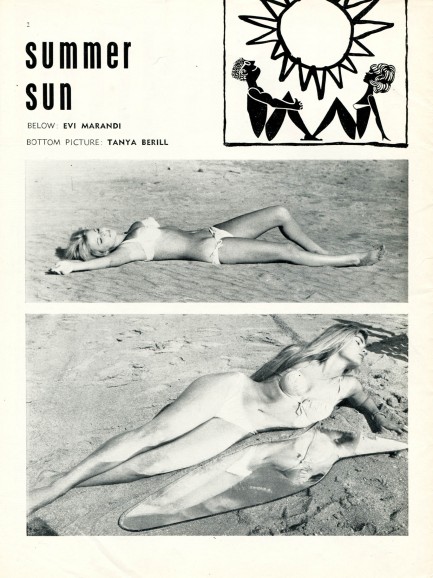 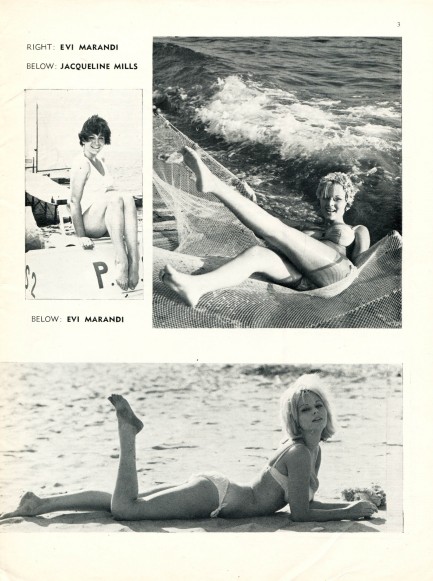 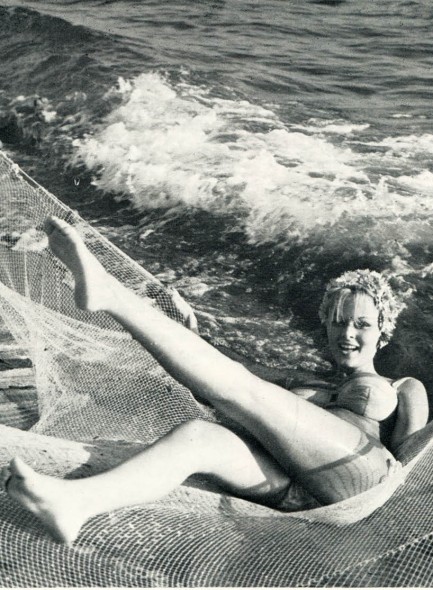 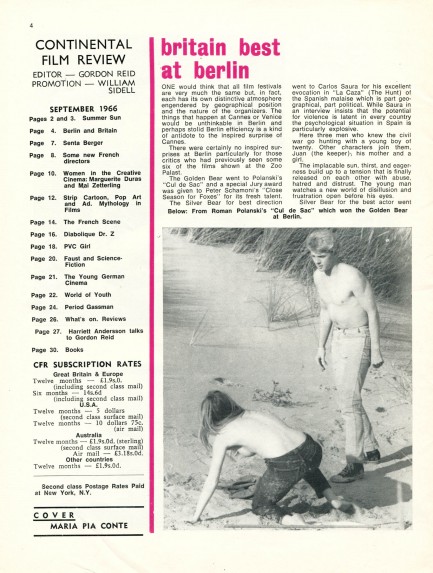 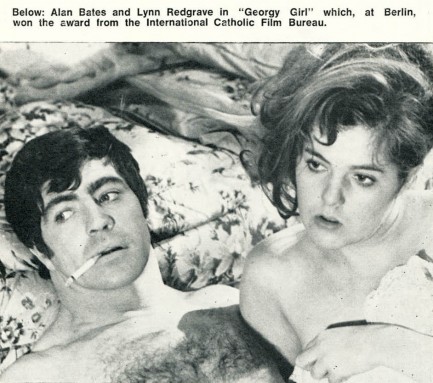 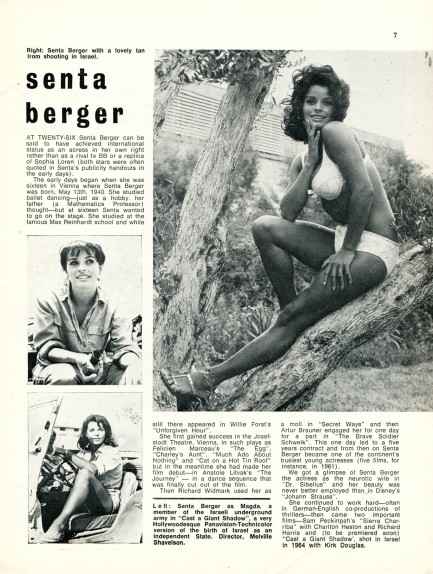 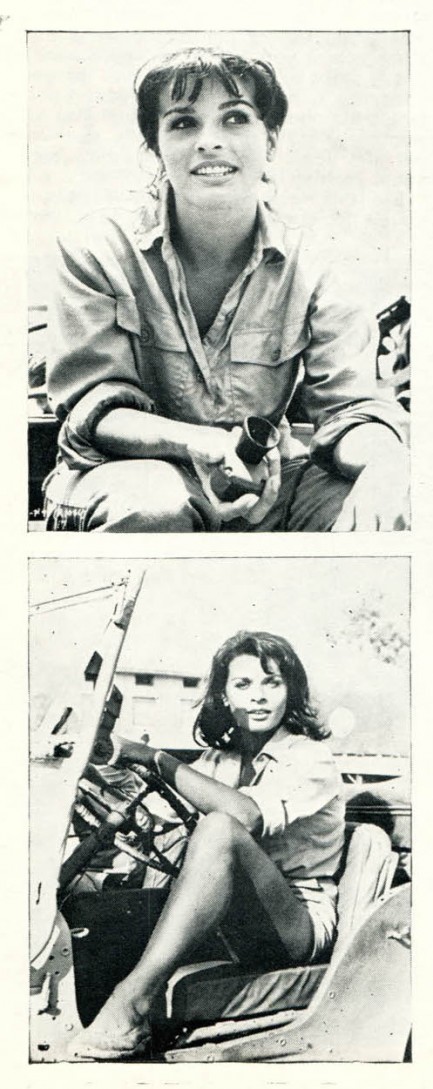 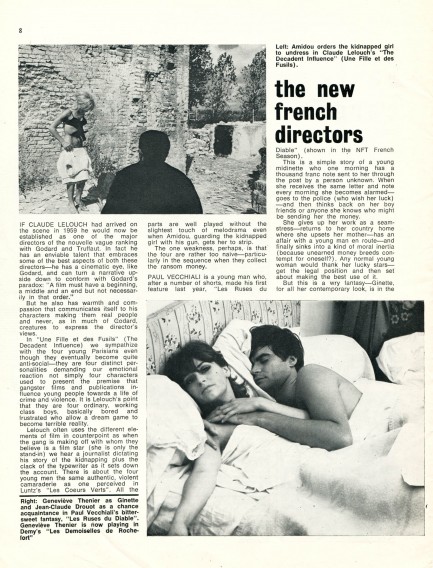 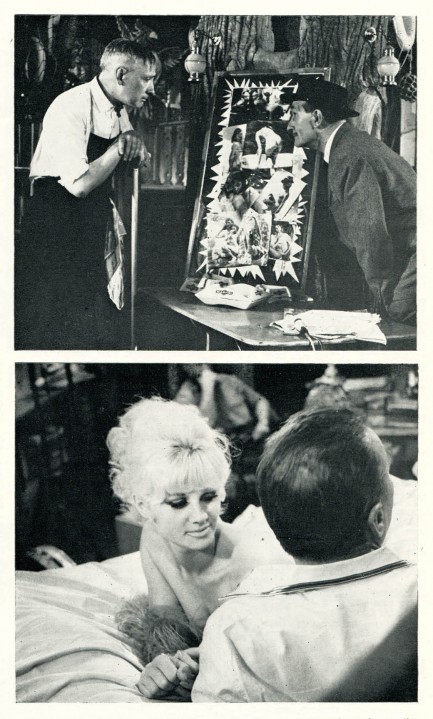 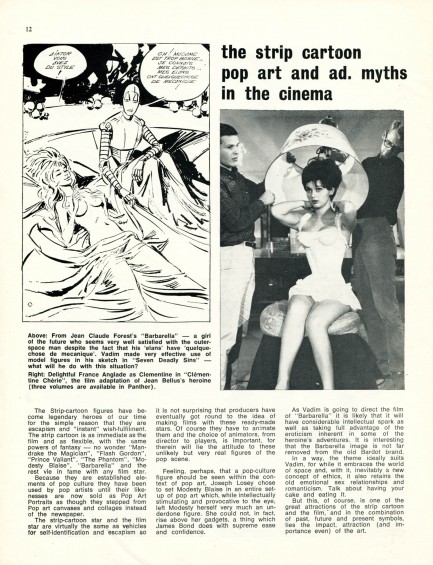 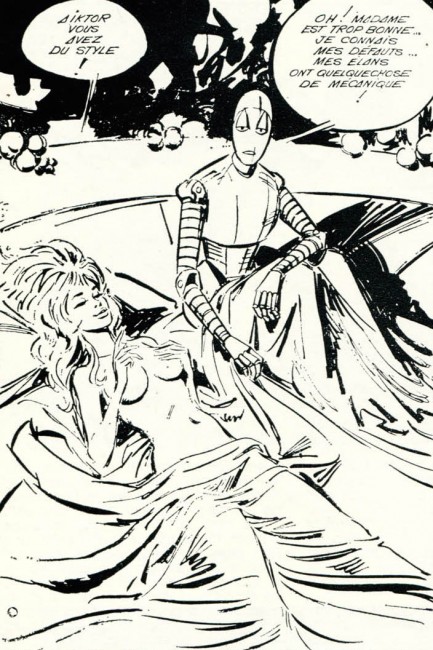 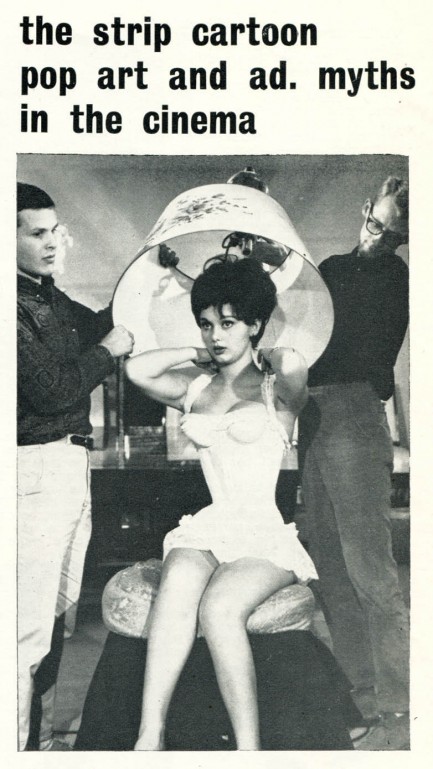 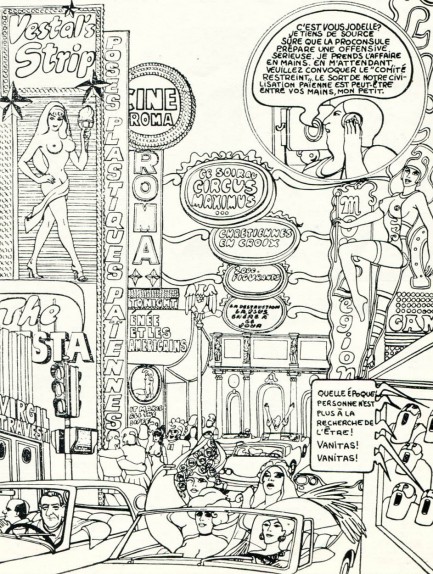 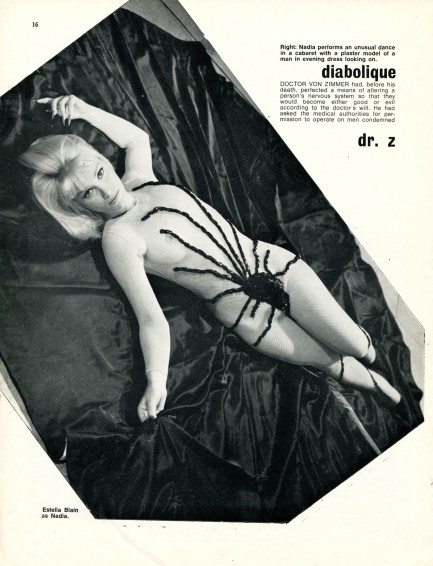 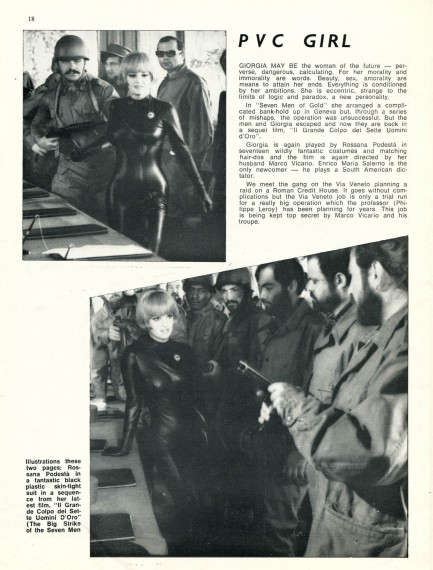 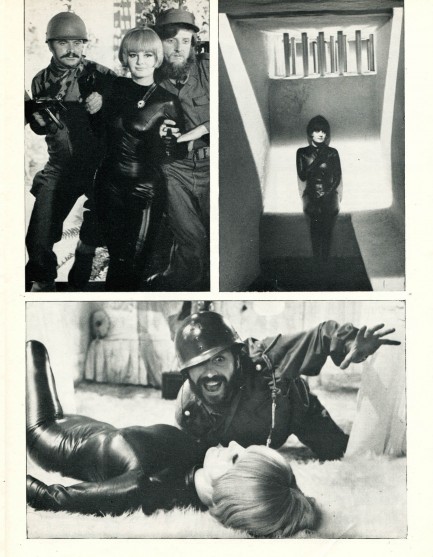 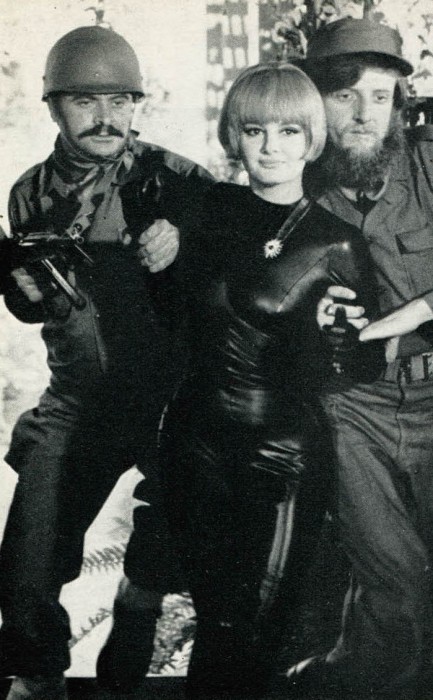 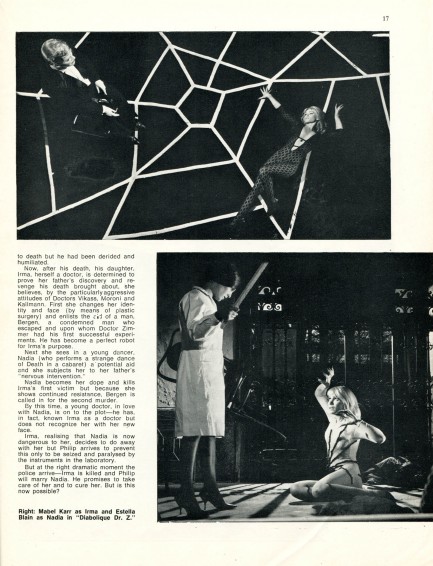 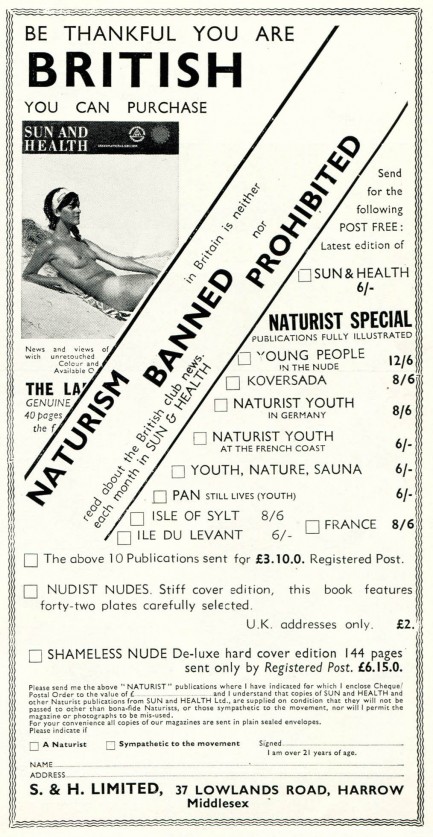 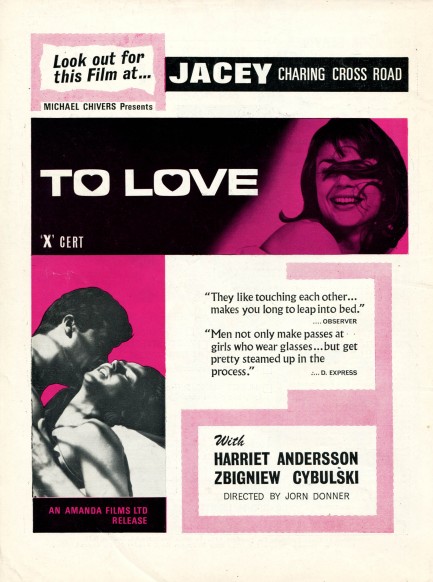
 It could have been worse. They could have flown United. 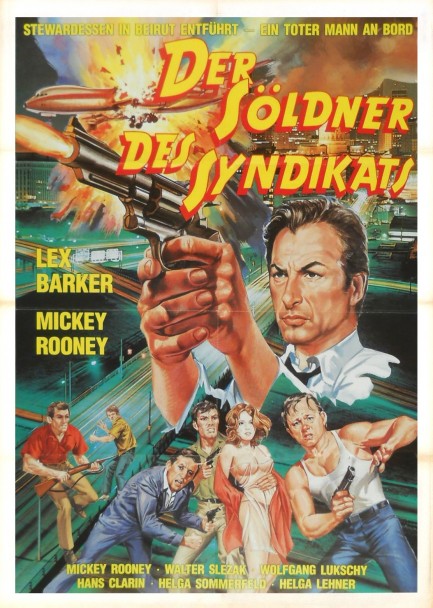
This chaotic West German poster for Der söldner des syndikats caught our eye for a couple of reasons. One was its sheer garishness, and the other was because the unknown artist depicted diminutive Mickey Rooney all swoll up like a Marvel Comics superhero. It just screams cheeseball classic, so we had to check out the film, which is known in English as 24 Hours To Kill. When a plane makes an emergency landing in Beirut the flight crew learns that one of their number (Rooney, decidedly un-swoll and unheroic) is hunted by a criminal smuggling syndicate he's double crossed. The repaired plane leaves in twenty-four hours, and the crew decide to protect Rooney until that time. Abandoning him is out, because he's a pal, and going to the police is out, because they'd be stuck in Beirut for days or weeks, thus making the syndicate's job easier. So the plan is to protect Mickey Louse for a day and then jet—if they can manage it. What follows is a series of botched abductions worthy of Raiders of the Lost Ark, ornamented with location shooting in Byblos, Baalbeck, Casio Du Liban, and a Beirut long since reshaped by war and bulldozed for high rises and privatized resorts. Those locations possibly make the movie worthwhile all on their own, and other beautiful sights are provided by co-stars Helga Sommerfield and France Anglade. A minor ’60s thriller, this one feels like a television movie, which means the level of tension is not nearly high enough. Nor the level of action—there's more on the poster than in the film. But even if the art misleads, the movie is entertaining enough. Made in English by the West German production company Grixflag Films Ltd., Der söldner des syndikats premiered in West Germany today in 1965.
 Intimidating movie poster Mickey. Intimidating movie poster Mickey.
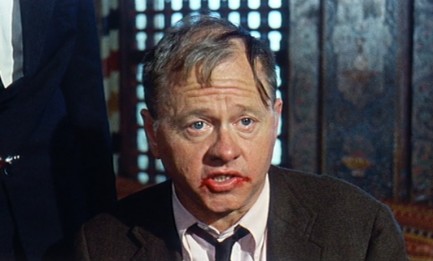 Not very intimidating movie Mickey. Not very intimidating movie Mickey.
 Getting the most out of challenging positions. 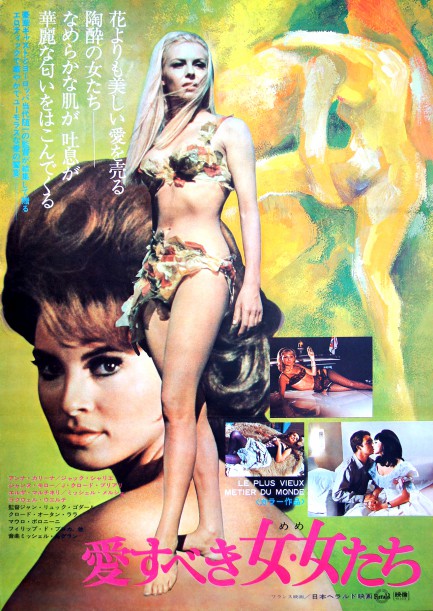
Did we not just see Raquel Welch yesterday, as well as earlier this week? Indeed we did, but we assume you don’t mind the return engagement. This Japanese poster with her and Michèle Mercier was made to promote the comedy Le plus vieux métier du monde, aka The Oldest Profession, which played in France in 1967 but didn’t appear in Japan until today in 1971. We watched it last night, and it's a six-part anthology dealing with prostitution through the ages. For example, the first sketch is set during prehistory—that time inhabited by slender Anglo Saxon fashion models—another is set in ancient Rome, and another during the Parisian gay nineties, where Welch makes her appearance wearing corsets and speaking French. The last segment, directed by Jean-Luc Godard, takes place in the future. Or what used to be the future in 1967—the year 2000.
While all the skits deal with prostitution, some also deal with money, and the efforts of the female characters to obtain it. For instance Welch finds out her dumpy customer is a banker and the rest of the segment follows her ultimately successful gambit to trick him into marrying her. Besides Welch and Michèle Mercier, the movie features top sixties sex symbols Elsa Martinelli, Jeanne Moreau, Anna Karina, Marilù Tolo, and Nadia Gray. That's a lot of star power in a somewhat low wattage movie, but there are laughs here, as long as you accept going in that comedies about prostitutes are not in any way realistic or politically correct. One great by-product of Le plus vieux métier du monde was a great Welch promo shoot, of which we have photos below. These will probably make you want to watch the film no matter what we think of it.
|
 |

The headlines that mattered yesteryear.
1945—Churchill Given the Sack
In spite of admiring Winston Churchill as a great wartime leader, Britons elect
Clement Attlee the nation's new prime minister in a sweeping victory for the Labour Party over the Conservatives. 1952—Evita Peron Dies
Eva Duarte de Peron, aka Evita, wife of the president of the Argentine Republic, dies from cancer at age 33. Evita had brought the working classes into a position of political power never witnessed before, but was hated by the nation's powerful military class. She is lain to rest in Milan, Italy in a secret grave under a nun's name, but is eventually returned to Argentina for reburial beside her husband in 1974. 1943—Mussolini Calls It Quits
Italian dictator Benito Mussolini steps down as head of the armed forces and the government. It soon becomes clear that Il Duce did not relinquish power voluntarily, but was forced to resign after former Fascist colleagues turned against him. He is later installed by Germany as leader of the Italian Social Republic in the north of the country, but is killed by partisans in 1945. 1915—Ship Capsizes on Lake Michigan
During an outing arranged by Western Electric Co. for its employees and their families, the passenger ship Eastland capsizes in Lake Michigan due to unequal weight distribution. 844 people die, including all the members of 22 different families. 1980—Peter Sellers Dies
British movie star Peter Sellers, whose roles in Dr. Strangelove, Being There and the Pink Panther films established him as the greatest comedic actor of his generation, dies of a heart attack at age fifty-four.
|

|
|

It's easy. We have an uploader that makes it a snap. Use it to submit your art, text, header, and subhead. Your post can be funny, serious, or anything in between, as long as it's vintage pulp. You'll get a byline and experience the fleeting pride of free authorship. We'll edit your post for typos, but the rest is up to you. Click here to give us your best shot.

|
|


























 Intimidating movie poster Mickey.
Intimidating movie poster Mickey. Not very intimidating movie Mickey.
Not very intimidating movie Mickey.


